









































































The book goes on to present evidence that this “great rewiring of childhood” has interfered with children’s social and neurological development Haidt discusses everything from sleep deprivation to attention fragmentation, addiction, loneliness, social contagion, social comparison, and perfectionism.
It is no question that today s generation is much more reliant on phones, and in response, educational facilities are starting to take action to mitigate their use in school
In late summer 2024, Gov. Ned Lamont and Connecticut Education Commissioner Charlene M. Russell-Tucker issued a statement urging school districts to consider implementing cell phone restrictions in Connecticut schools.
This state guidance included suggesting school districts create guidelines by level of student, including: y Elementary School: The policy should remove cell phones from the classroom to maximize academic, social, and emotional development y Middle School: The policy for middle school students should also focus on removing cell phones from the
by Susan Shultz
the New York Times’ bestseller “The Anxious Generation,” author Jonathan Haidt wrote that “play-based” childhood began to decline in the 0 s. Haidt went on to report that this play-based childhood has been wiped out by “phonebased” childhood in the early 00’s.
school day or classroom. State guidance notes that middled schoolers are particularly vulnerable to negative effects created by phones and social media. y High School: The state guidance recommends restrictive policies for high school students and cell phone use, but allows that at this level, students are more developmentally ready to take ownership of their own self-control. However, it is also noted that inappropriate and illegal use of cell phones is more likely at this level. Due to this likelihood, the state guidance suggests that a Code of Conduct be put in place to enforce proper and appropriate usage.
The governor noted that this guidance is simply that, and schools are encouraged to form their own policies. But he emphasized that some form or policy is needed given the evidence of distractions and impact on mental health.
“All too often, our young people find themselves too distracted by their smartphones and disconnected from the reality of what is happening around them, including while in their classrooms, and it’s having negative impacts on their learning and mental well-being.” Governor Lamont said. “It is crucial that we adopt stronger policies to address this issue head-on. The state’s guidance provides a clear framework, but it is up to each school district to shape their own policies that meet the needs of their students and communities.”
>> In Wilton all cell phones and Apple watches, up through high school students, must be provided to school administration to be locked in Yondr pouches. The bell-to-bell policy includes airpods, earbuds, headphones, smartwatches, fitness trackers and other accessories that connect to the internet.
The high school policy received some pushback as some parents argued many students work and have other outside obligations that require communication to the outside world. Regardless, the Yondr pouch policy was put into effect Fall 2024.
Darien Public Schools have a similar policy, but the bell-to-bell policy only applies up to the middle school students. The same policies through middle school are in effect in Stamford.
Greenwich Public Schools have hybrid of the above, where up through the middle school level, there’s a no cell phone bell-to-bell policy. High School students in Greenwich are under an “away for the day” policy, where their phones should be off and out of sight. However, Greenwich high schoolers can use their phones for academically appropriate uses, such as taking photos of notes or using them to film for a project.
In Salisbury School a private all-boy boarding school in CT, students have school areas, including classrooms, where cell phone use is discouraged. The policy, which
was put into effect in Jan. 2024, “is driven by a vision to create an environment that prioritizes meaningful connections and personal growth, focused learning, courteous interactions and a sense of community.”
At the Catholic Academy of Stamford which is comprised of grades K through 8, students through grade five are specifically not allowed to bring cell phone devices to school. The school allows for a more lenient policy for grades six through eight, but they should be turned off during the school day.
St. Luke’s School in New Canaan requires its students to keep cell phones off and in their backpacks during the school day.
The Pew Research Organization reported in Oct. 2024 that one-third of U.S. residents (36%) support banning middle and high school students from using cellphones during the entire school day, including at lunch as well as during and between classes. By comparison, 53% oppose this more restrictive approach.
Approximately 7 out of 10 Americans support banning cell phone use during class, while only a third back an entire day ban
The main reason overwhelmingly cited by parents in favor of the ban is to eliminate classroom distractions.
Six out of ten who are opposed to the ban cited wanting the ability to reach their child during class as the reason they are against it. For more information or statistics, visit WWW.PEWRESEARCH.ORG l
oc sae
eneeso suens













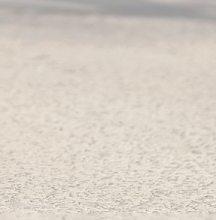

by Susan Shultz
New state guidance this year meant that kindergartners entering this school year had to have turned by Sept of the year they
intend to enroll in. Previously, students could enroll in kindergarten in Connecticut if they would turn age by Jan. of the school year
Kindergarten CONTINUES ON PAGE 6


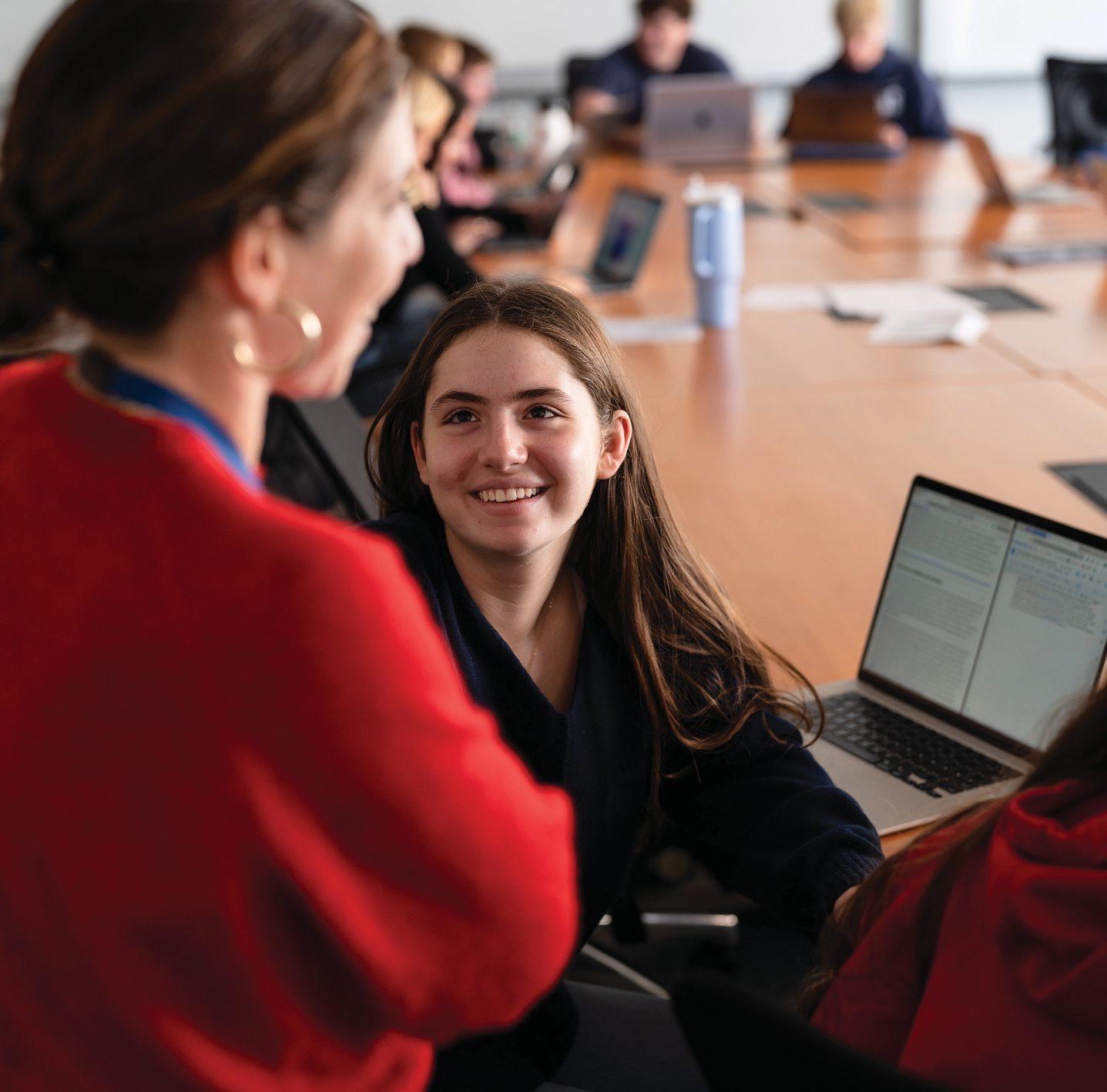

SJ Cadets from 36 townsseekout their talentsandthrivewithconfidenceeachand everyday
26 AP andEarly CollegeCourses. The averagestudent earns6 collegecredits.
88% of studentsplayonatleast 1ofour 55 teams. Thus far, theClass of 2025 hassigned 19 lettersofintentfor Division I, II,and III collegiate athletics.
SJ Cadets aregiven theopportunity to exploretheir hobbiesand interestsin 40+ clubsand activities.
St.Joesstudentsvolunteer an averageof 36,000 hoursofservice annually.
100% of SJ Cadets areaccepted to college. TheClass of 2024 earned more than $38 millioninscholarships.

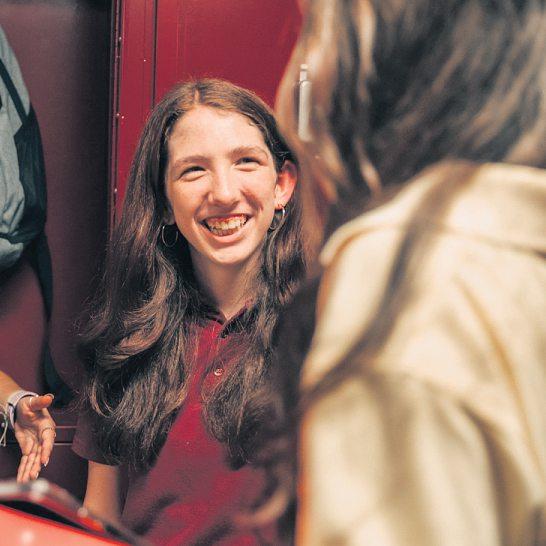
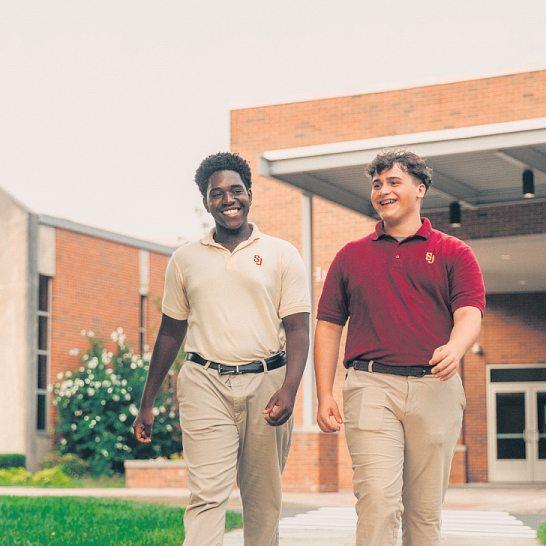




According to the state’s Office of Early Childhood Education, before this change Connecticut had one of the youngest kindergartner entry ages in the country.
The impact of this policy change meant that districts were expected to see significantly lower enrollment in Kindergarten in Fall 2024 and a potentially smaller grade cohort moving through our education system.
Parents who would like their children, who turn five between Sept 2, 2025, and Dec. 31, 2025, to enroll in kindergarten next fall can request an assessment
Those parents can reach out to the leadership of the school their child would attend to request an early admission to kindergarten.
After receiving a request for an exception from a parent (or guardian), the school must assess the child to
Many schools offer programs to help kindergarten students transition to the first day. Some offer visits to try to board the bus before the first day. Others allow parents who volunteer to ride the bus.
determine if early entry to kindergarten is developmentally appropriate.
Parent information and observation may be a part of this assessment
Parents should communicate with the school principal regarding your child’s development and whether the kindergarten classroom is an appropriate fit.
Parents whose children meet the appropriate parameters to start kindergarten in fall 2025 can also request a waiver to delay their child’s start.
At the Catholic Academy of Stamford, a child’s educational journey begins in pre-kindergarten. A gently structured curriculum for ages 3 and advances all areas of each child’s development with age-appropriate activities that support cognitive, spiritual, social, emotional, and physical growth. Every day is accompanied by faith in God and infused with Catholic values. >>

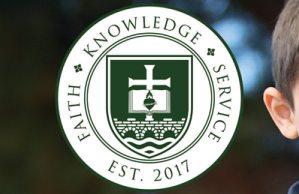








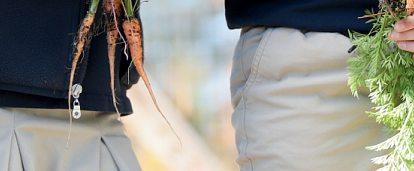






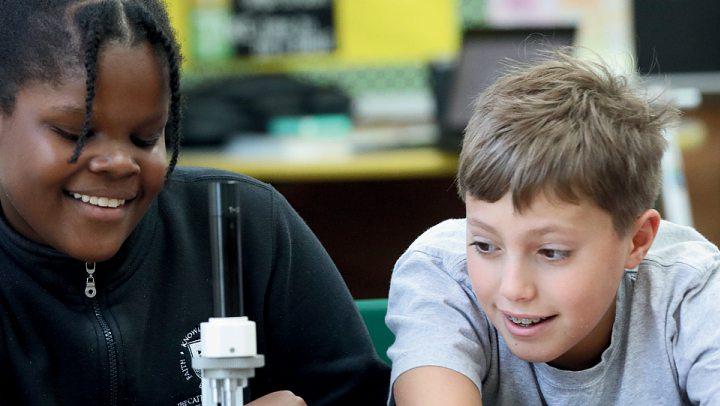



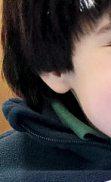


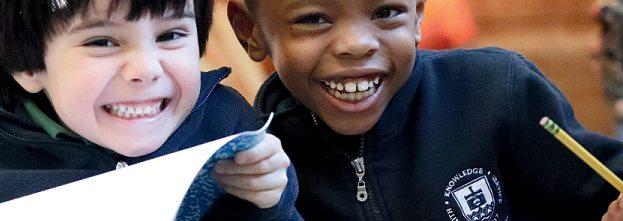



>> In addition to the daily curriculum, pre-kindergarten children also benefit from many of CAS’s enrichment classes including gym, music, Spanish, art, and library which helps them ease into the transition into kindergarten. By the end of preK-4, CAS’s pre-kindergartners are enthusiastic learners, ready for Kindergarten and the next building blocks of their educational foundation.
King School, Stamford, uses a project-based teaching and learning approach in its pre-kindergarten and kindergarten classrooms to support the developmental range of students as part of its early childhood education program
Teachers intentionally nurture a growth mindset and utilize project-based learning in order to establish the foundation for a love of learning and success for a child’s future.
Teachers have the expertise and resources needed to work meaningfully and collaboratively with kindergarten students to help them learn problem-solving strategies that will assist them mathematically and phonetically as well as support them as they learn to establish and sustain meaningful relationships with classmates. With this guidance, kindergarten students are able to become independent, inquisitive learners who set personal goals and gain the self-confidence needed to accept academic challenges and to help others

There are parent communities on social media for your particular school that offer ways to connect with other kids in the same class as your child. Reach out once your child’s teacher is assigned to see if they’d be up for a play date before school starts—even better if it’s at the playground of the school in question.
Further, the National Association for the Education of Young Children has a series of tips to prepare your kindergartener:
y Take care of any medical needs— make sure your school nurse has any required medications such as an inhaler for asthma or an EpiPen, (and make sure they have the required authorization form from the pediatrician to administer it).
y Attend any meet the teacher events and do a full-scale campus exploration
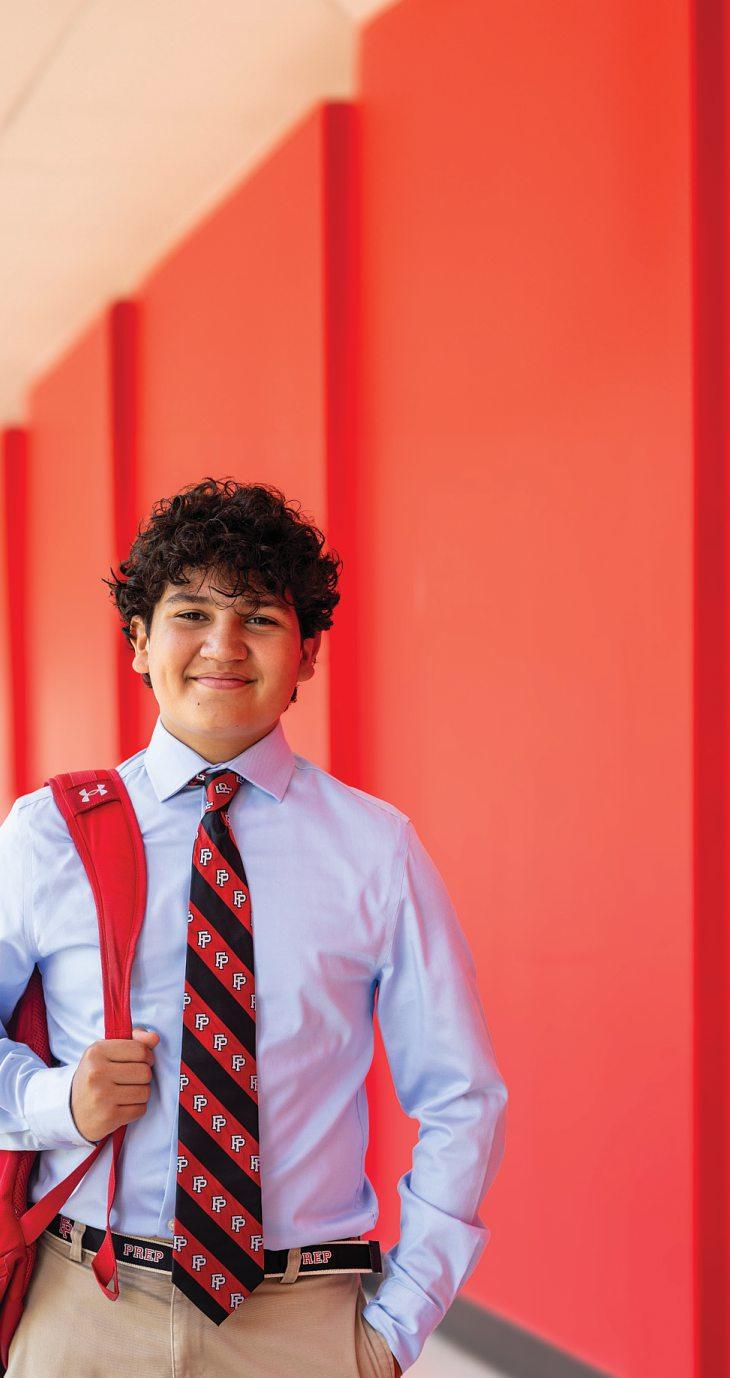

y Start the school routine early nothing is more likely to start first day of school tears or jitters like being exhausted
y Label all your child’s items
y Read books about starting school the NAEYC recommends “Miss Bindergarten Gets Ready for Kindergarten,” by Joseph Slate, “Seven Little Mice Go to School,” by Kazuo Iwamura or “Mom It’s My First Day of Kindergarten” by Hyewon Yum
y Be positive. Give your child a smile and a hug, tell her you love her, and wave goodbye (even though you might want to cry).
y During the first week, be supportive, encourage confidence, and talk each day about the school events and new friends.
y Finally, start a first day of school tradition! Go out for ice cream or a special dinner to celebrate.
For more information on kindergarten regulations, visit WWW.PORTAL.CT.GOV l

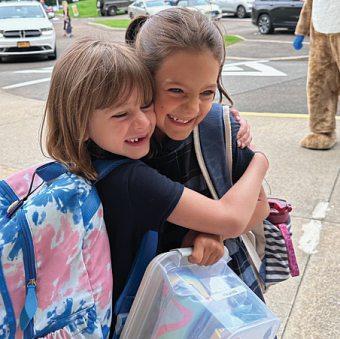




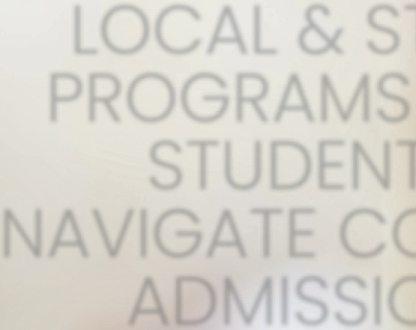
by Susan Shultz
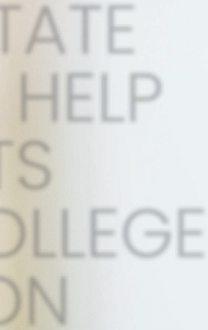
The National Association of College Admission Counseling offers a checklist for high school juniors intending to go to traditional post-graduate colleges or universities.
From September to December, they recommend talking to your school counselor and preparing for the test dates of the PSAT, ACT and SAT.
They also recommend this period is the time to start putting a resume together of all your accomplishments that will eventually be part of your application.
In the spring semester of your junior year, it is recommended to start researching colleges and universities and planning college visits. Begin to narrow down a list. Over the summer, start planning college visits.
Early action and decision starts fall of senior year and the admission process continues through January.
Students should check the details of the FAFSA deadlines for Connecticut and the state. For the upcoming college year, the deadline for the state is Feb. 15, 2025.
Colleges and career schools use the FAFSA form to determine how much financial aid you ' re eligible to receive which could include grants, scholarships, work-study funds, and loans.
Visit WWW.STUDENTAID.GOV/H/APPLYFOR-AID/FAFSA for more information.
Remember, you must apply for aid EVERY year.


The college admission process can be daunting for everyone involved, and especially for parents and students who haven’t experienced it before.

Many school guidance departments, organizations like town libraries, and private companies can offer help start the process.

Many schools, like Newtown High School, have a college and career center.
At Newtown, the College and Career Center is a valuable resource for students and their families Located right next to the NHS Counseling Office, it offers many tools and guides to assist students in researching their colleges and career choices, with many links to resources. The College and Career Center staff assists students with that planning.
The staff is also a great resource for scholarship information. Local, state, and regional scholarships are posted and shared with students via College and Career Scholarships Padlet A month to month guide identifies and lists the current scholarships available to our students and how they can apply for them.
The office also shares updates about community volunteer opportunities, college planning news, available job opportunities and summer programs.
Check your individual school offices to see your resources much like this one in Newtown.
The state also offers an expansive guide to higher education resources. On this page, under the education section, residents can find information on programs to help pay for higher education programs.
The state has also organized a database of schools that lean toward more trade careers. These schools have been vetted to ensure they are credentialed. Students can learn expertise in nail art, bartending, commercial driving, hair styling, cosmetology, medical and dental assistance, and many more. Visit WWW.PORTAL.CT.GOV/ SERVICES/EDUCATION/HIGHER-EDUCATION for information.
There are also free resources for students to use for assignment research l

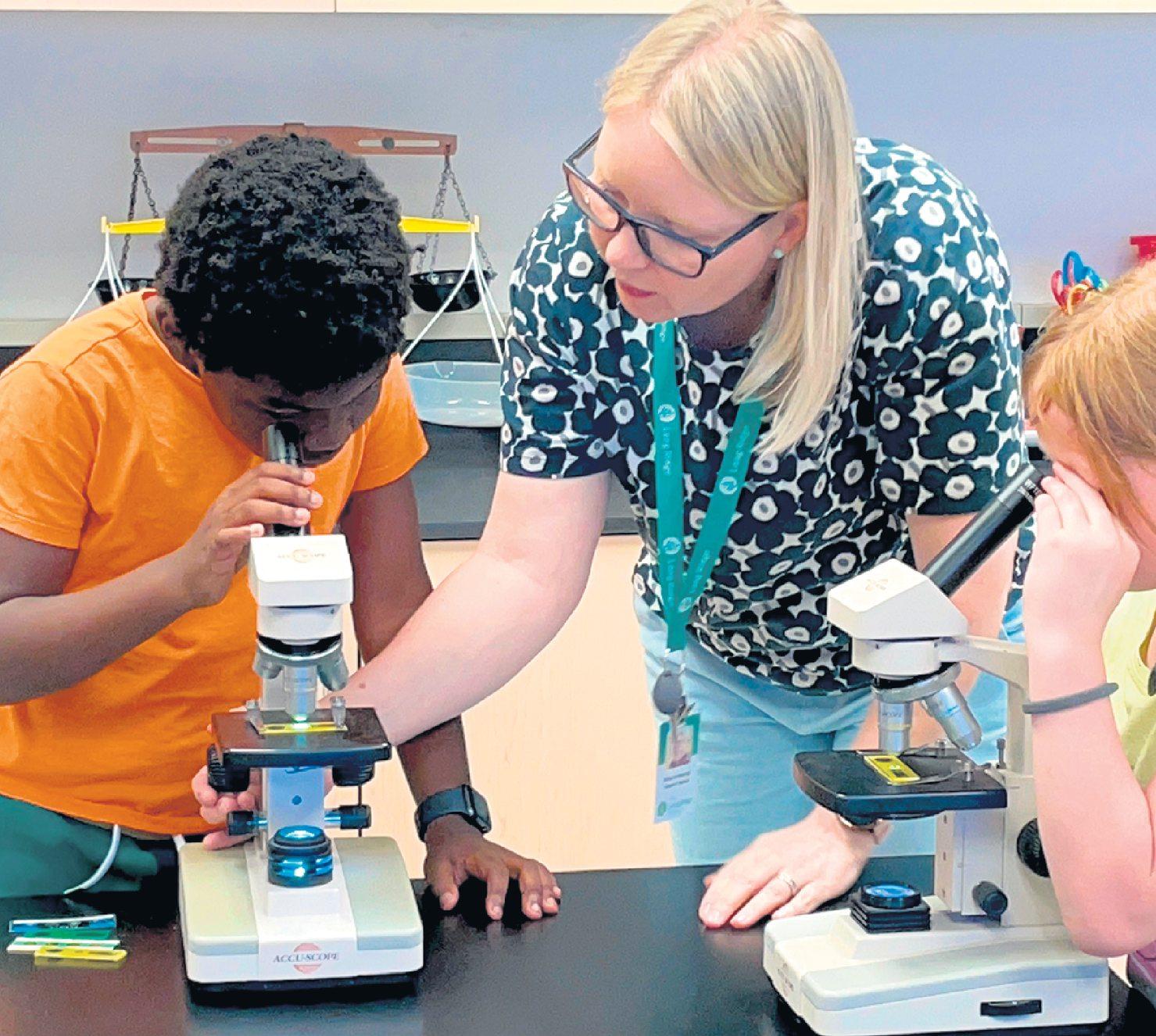
•Specializing in earlyeducation, age2-grade5
• Specializinginearlyeducation, age2-grade5
• Nurturingintellectualcuriosity,collaboration, andcreativeexpression
• Nurturingintellectualcuriosity, collaboration, and creativeexpression
• Inquiry-based, experientiallearning
•Inquiry-based, experientiallearning
• Individualizedinstruction
•Individualized instruction
• Lowstudenttoteacherratios
•Low studentto teacher ratios
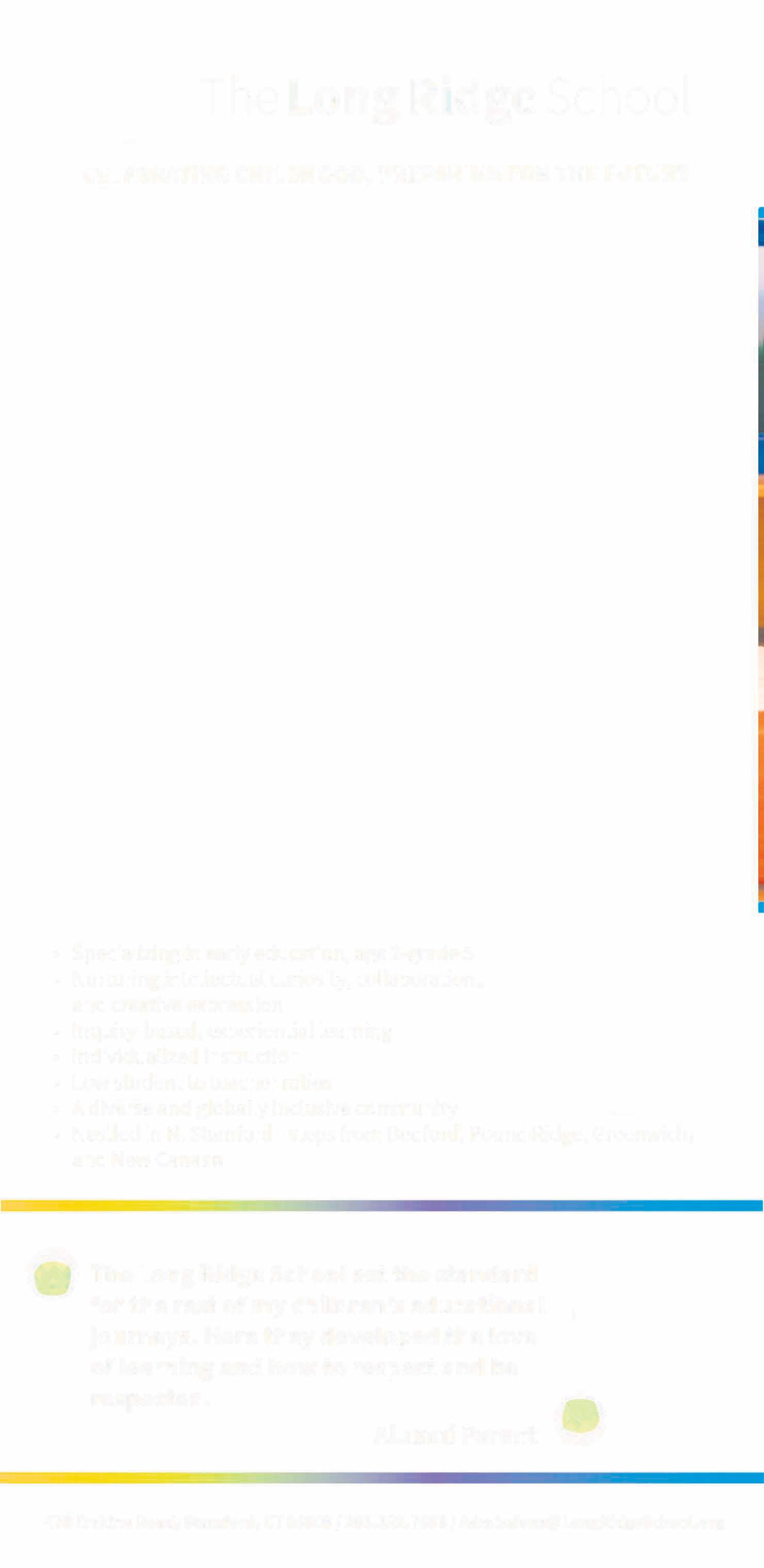
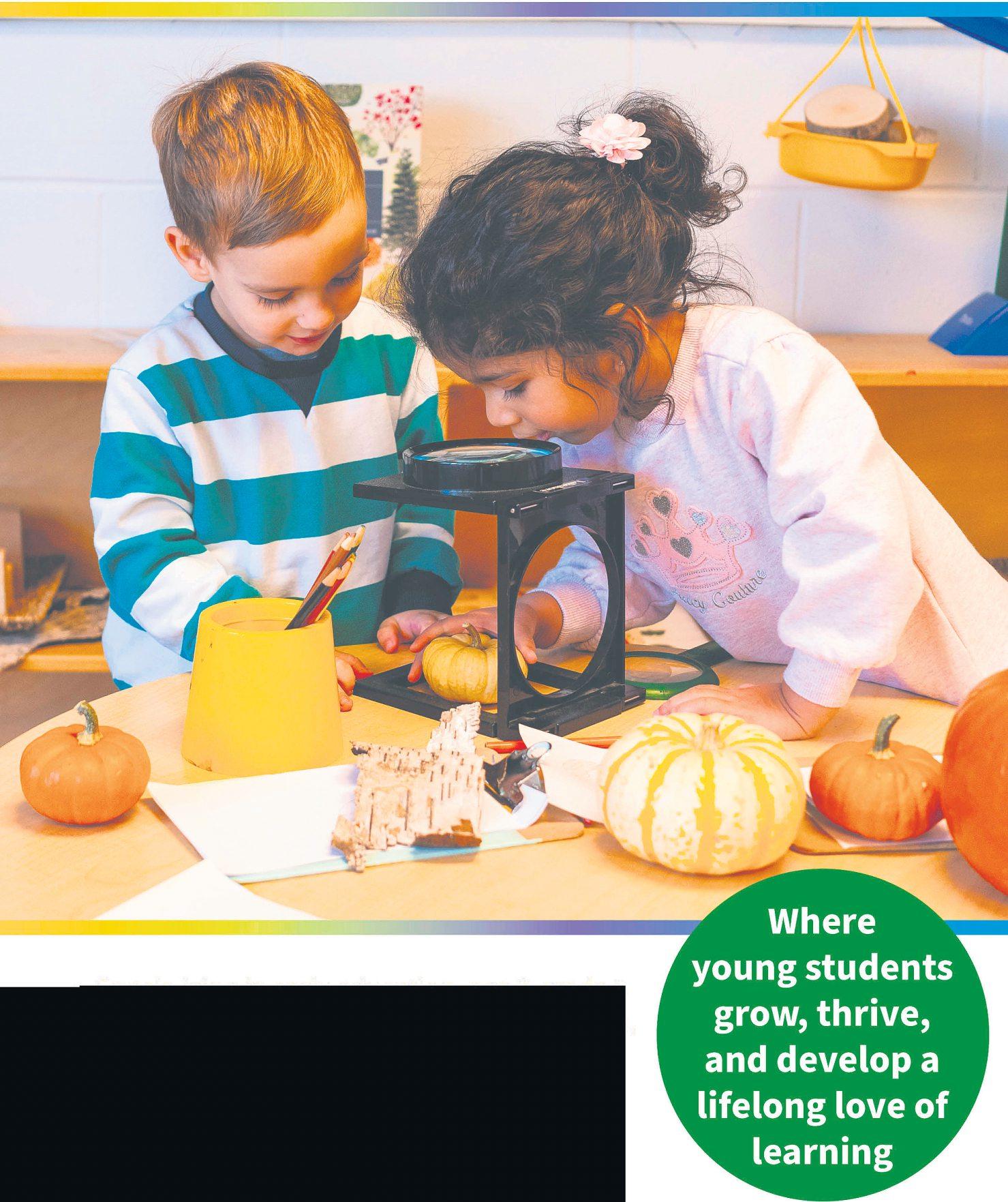
• Adiverseandglobally inclusivecommunity
•A diverseand globally inclusivecommunity
• NestledinN.Stamford-stepsfromBedford,Pound Ridge, Greenwich, and New Canaan
• NestledinN.Stamford—steps from Bedford,Pound Ridge, Greenwich,and New Canaan Where young students grow,thrive, and developa lifelong love of learning
TheLongRidgeSchoolsetthestandard fortherestofmychildren'seducational journeys.Heretheydevelopedthelove oflearningandhowtorespectandbe respected.

478ErskineRoad,Stamford,

Everystudent learns so differently, buttraditional schoolsteach them allthe same.AtFusionAcademy, our1-to-1classes matchyourstudent’s pace and preferences. They’lllearn better,divedeeper,and neverget left behind.




























hile being a member of any school club is bound to provide students enrichment, there are some clubs that are unique to the schools and the students. From healing hearts to feeding fish there’s something for all interests.
by Susan Shultz



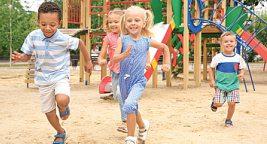
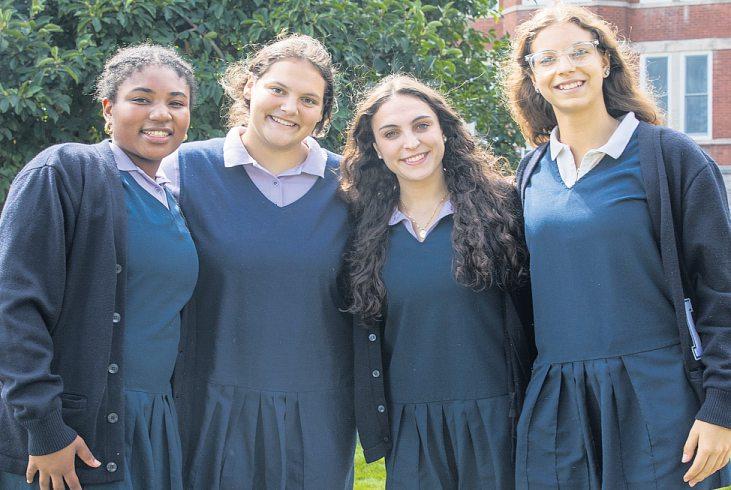





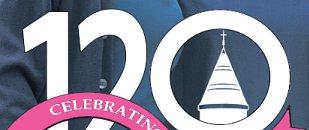





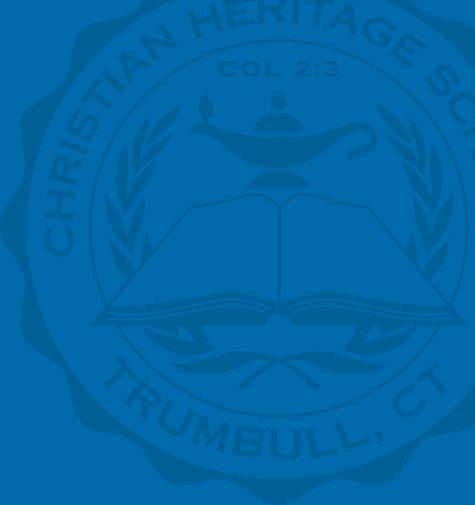
The Frog Conservation Club
Both the Convention on International Trade in Endangered Species of Wild Fauna and Flora (CITES) and the International Union for Conservation of Nature and Natural Resources (IUCN), have classified the Oophaga lehmanni, also known as red-banded dart frogs, as “critically endangered.”
The species is threatened mainly by habitat loss and the illegal pet trade. King students have built several vivariums that reflect their endemic habitat to a small section of the rainforest in western Colombia.
DeFelice is spearheading this conservation initiative as a co-curricular activity that attracts upper school students to apply their passion for conservation through education and action. Students meet regularly to maintain the largest vivarium and assemble new vivariums to better accommodate the growing frog population. Additionally, club members are diligently working on transforming a large 90-gallon tank into a vivarium for Jenkinson’s Aquarium in Point Pleasant Beach, New Jersey. When complete, it will house several frogs bred at King to help inform and educate the public on the species >>
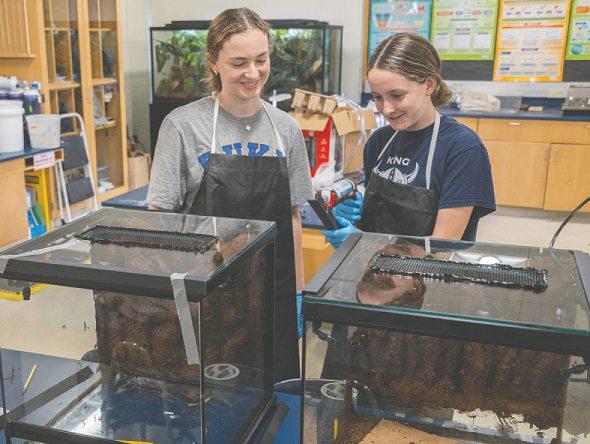








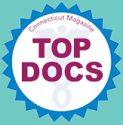



DANBURY
>>Healing Hearts and Hands Club
The Healing Hearts and Hands Club is an afterschool club for those individuals interested in careers in the fields of medicine, nursing and science and giving back to the community To date, they have made blankets for Brady’s Smile (WWW.
BRADYSSMILE.ORG) put together care packages for patients at Haven Care at Hancock Hall including goatboy soaps and jams donated by Lisa Agee at GoatBoy Soaps. They had a guest speaker share her experience as a nurse. They are also planning on helping with the American Red Cross Blood Drive and in February will be stuffing and sewing heart pillows for Matthew’s Hearts of Hope.
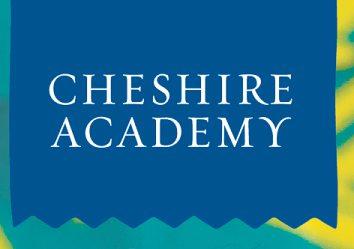
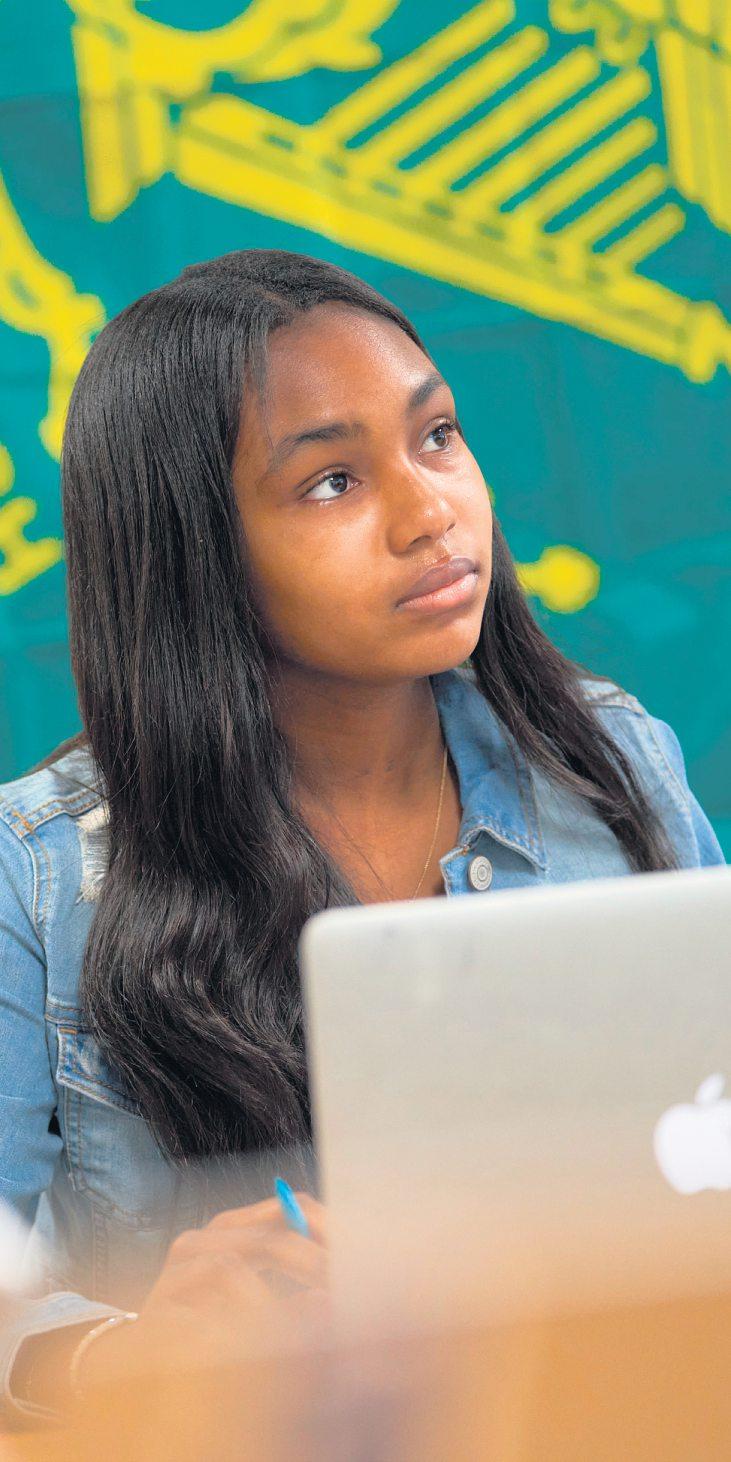

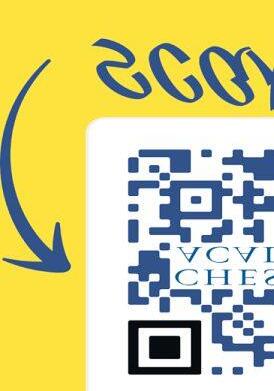

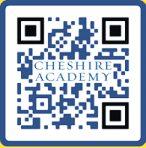


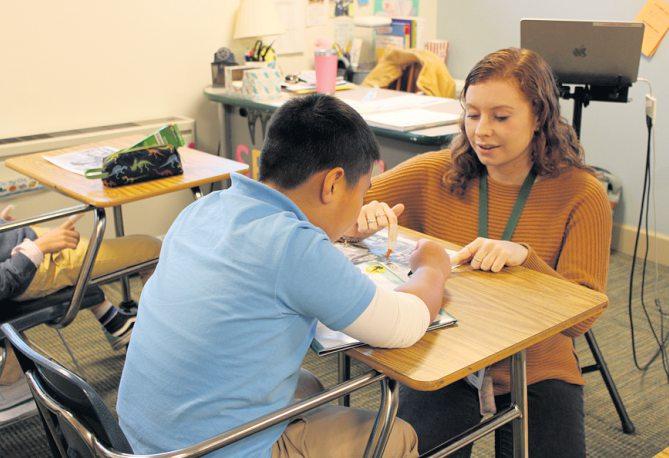


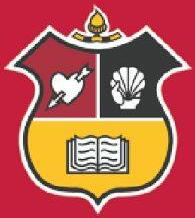
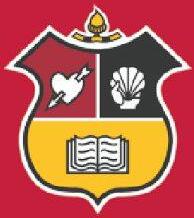


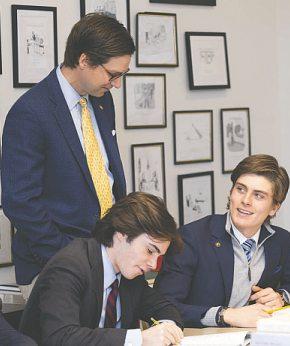
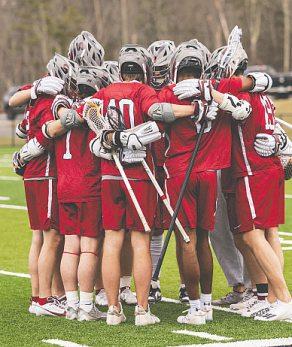
NEW CANAAN
Women in STEM Education
The Women in STEM Education (WISE) club creates a supportive environment that fosters engagement in STEM fields in females. WISE provides education and learning-experiences to girls in the St. Luke’s community as well as provides service to the Middle School community at the school.
Service
There are over 15 clubs focused on some aspect of service or that partner with a specific non-profit organization. St. Luke’s has many “traditional” clubs like Midnight Run or student-created clubs like Hidden Gem Animal Rescue (supports a specific local animal shelter), The Loved Movement (supporting families going through cancer), or One Love (aims to educate on toxic relationships and raise funds for One Love Foundation).
CAS offers a vibrant Student Leadership Council for grades five through eight. It also offers Beyond the Bell clubs and programs in the fall, winter and spring including but not limited to Cooking Club, Film History Club, Bocce Ball Club, Art Club, Chess Club, Robotics Club, Co-ed Volleyball and Basketball, dance, theater, team sports and more. >>






>>Trout Club
Raising trout at WHS has been a Science Department experience for more than 20 years. Each fall, the club picks up about 20 to 30 brown trout from the state Fish Hatchery in Burlington, CT The trout are then placed in “Big Blue,” the 500-gallon tank in the Animal Room at the school.
Students in the trout club help feed and care for the trout twice a day Trout need super clean conditions to thrive! Students learn the importance of filtering the water that enters the tank and how bacteria help keep the tank healthy Students monitor the quality of the water in the tank by conducting water chemistry tests for pH, nitrates and more They also monitor the growth of the trout by measuring their length and weight. The club also brings in community representatives from the local chapter of Trout Unlimited to share their expertise with the students
In the spring, the students help release the trout into the Norwalk River. Studying the trout and their requirements helps students gain a better understanding of the importance of clean, healthy ecosystems to the survival of fish and other species. l

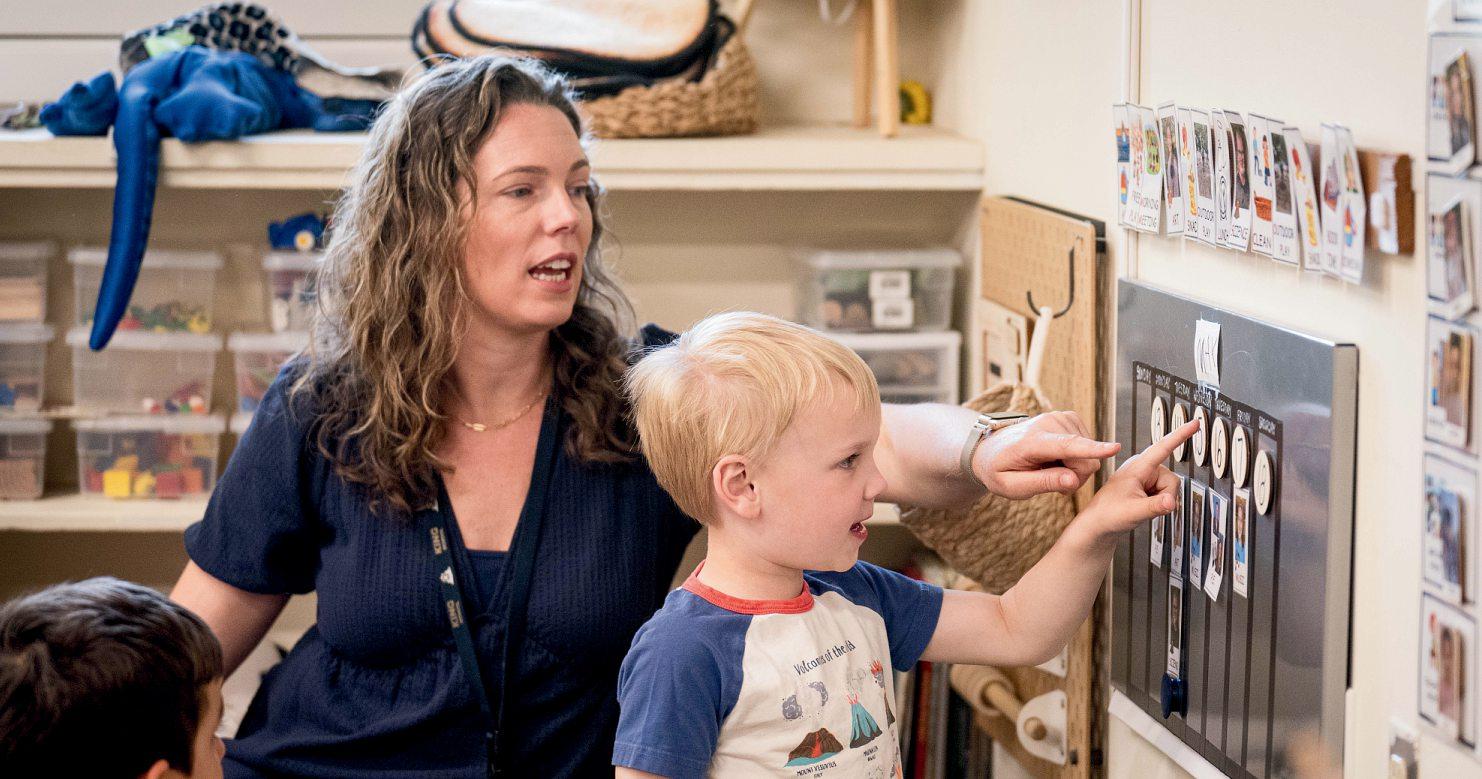



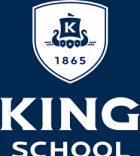

by Susan Shultz
Since its start in , National Catholic Schools Week (CSW) is the annual celebration of Catholic education in the United States CSW runs from the last Sunday in January through the following Saturday.From January –February , 0, continues hosting the traditional Celebrate Catholic Schools Week. Schools typically observe the week with Masses, assemblies, events and other activities for students, families, parishioners and community members to join the celebration around what makes Catholic schools stellar. >>
The SpeechAcademy provides highly individualized educational programming within astrongspeechand language base of learning Skills targeted in therapy sessions arereinforcedthroughout the school dayvia speechdrills, vocabulary generalization, and language processing acrossacademicareas. Basedon individual needs, supportfor visual-motor integrationand auditory perception is provided both directlyand integrated into dailyactivities. Enrichment classes suchasArt,Music, Adaptive Physical Education, and Computerscomplement thecorecurriculum.

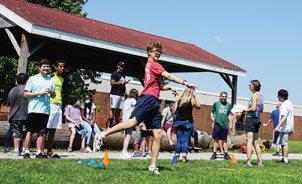


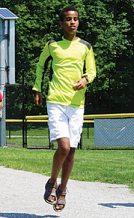
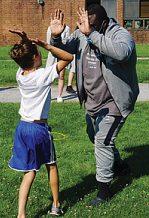


Easton Campus
656Morehouse Road |Easton Somersville Campus 41 School Street |Somersville www TheSpeechAcademy.org| 203-220-9595
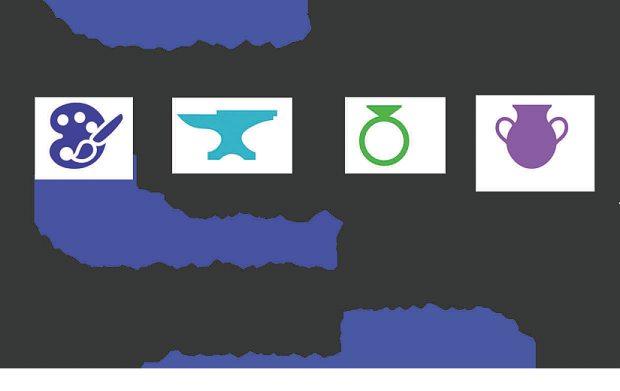




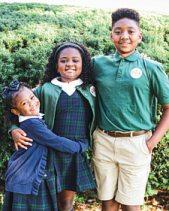





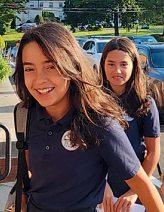









>> A second week in November was added for Catholic schools to leverage their good news in a national initiative: Discover Catholic Schools Week.
Connecticut has four Roman Catholic communities, including the Diocese of Bridgeport and Norwich, the Archdiocese of Hartford and the Ukrainian Catholic Eparchy of Stamford
According to the Diocese of Bridgeport, Catholic education is about more than academics it’s about preparing students to lead with faith, integrity, and purpose
By shaping the future, these schools empower students to dream big, grow in their talents, and make a lasting impact on the world. During Discover Catholic Schools Week, explore how Catholic schools in Fairfield County inspire the next generation.
Providing your children with a Catholic School education will not only help them achieve all their milestones as far as cognitive learning goes but their faith will be strengthened throughout each year. Staff makes sure to highlight all the academic learning points required by the state, while also providing classes and sessions revolving around teaching studentabout the Catholic religion and the dedication to their faith that they will build upon each year
“As we prepare to celebrate Catholic Schools Week, our Diocese of Bridgeport schools are excited to honor the faith-filled communities, dedicated educators, and exceptional students that make our schools so special,” said Director of Communications and Engagement Amy Griffin.
CONTINUES ON PAGE 18

Diocese of Bridgeport Catholic Schools is dedicated to providing quality Catholic school education throughout Bridgeport, Stamford, Norwalk, Danbury, Stratford, Newtown, Trumbull, Fairfield, and Shelton.
The academic programs, faith-filled learning communities,andsafeandsecure classroomenvironments,helpeducatethe wholestudent.

50% of these elementary schools achieved the Blue Ribbon of National Recognition.
99% of graduating high school seniors go on to college.
College financial aid awards to our graduating seniors total six million dollars in federal, state, and local scholarships and grants.
Nationally recognized curriculum mapping process exceeds Connecticut state standards.
Faculty participate in highest caliber professional development.










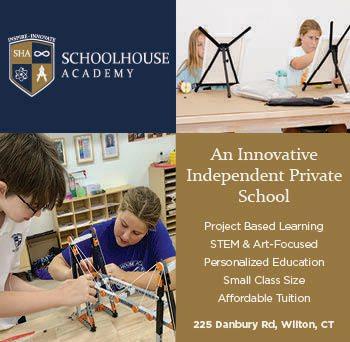
Throughactsofservice, engagingactivities, andjoyfulgatherings, we’llhighlightthe incrediblevalueof Catholiceducationand thedifferenceit makesinthelives ofourstudents,families, andcommunities.
Amy Griffin Director of Communications and Engagement Diocese of Bridgeport
Griffin encouraged the community to visit any of the 25 schools throughout Fairfield County to help celebrated the gift of Catholic education.
Visit WWW.DIOCESEOFBRIDGEPORTCATHOLICSCHOOLS.COM to learn more about these offerings or to schedule a tour.
The Archdiocese of Hartford will also be celebrating National Catholic Schools week with assemblies, Masses and other activities for students, families, parishioners and the community.
This archdiocese is made up of 35 Parochial schools, four high schools and two private schools
Despite the concerns and challenges Catholic schools face today, Catholic schools continue to offer students an outstanding education infused with the richness of our faith and supported by exceptional academics, reported the archdiocese’s website.
The archdiocese is gifted with many exceptional leaders on both the secondary and elementary school levels and administrative leaders consistently look for new opportunities to be creative and to think outside of the box
For WWW.ARCHDIOCESEOFHARTFORD.ORG for more information. l
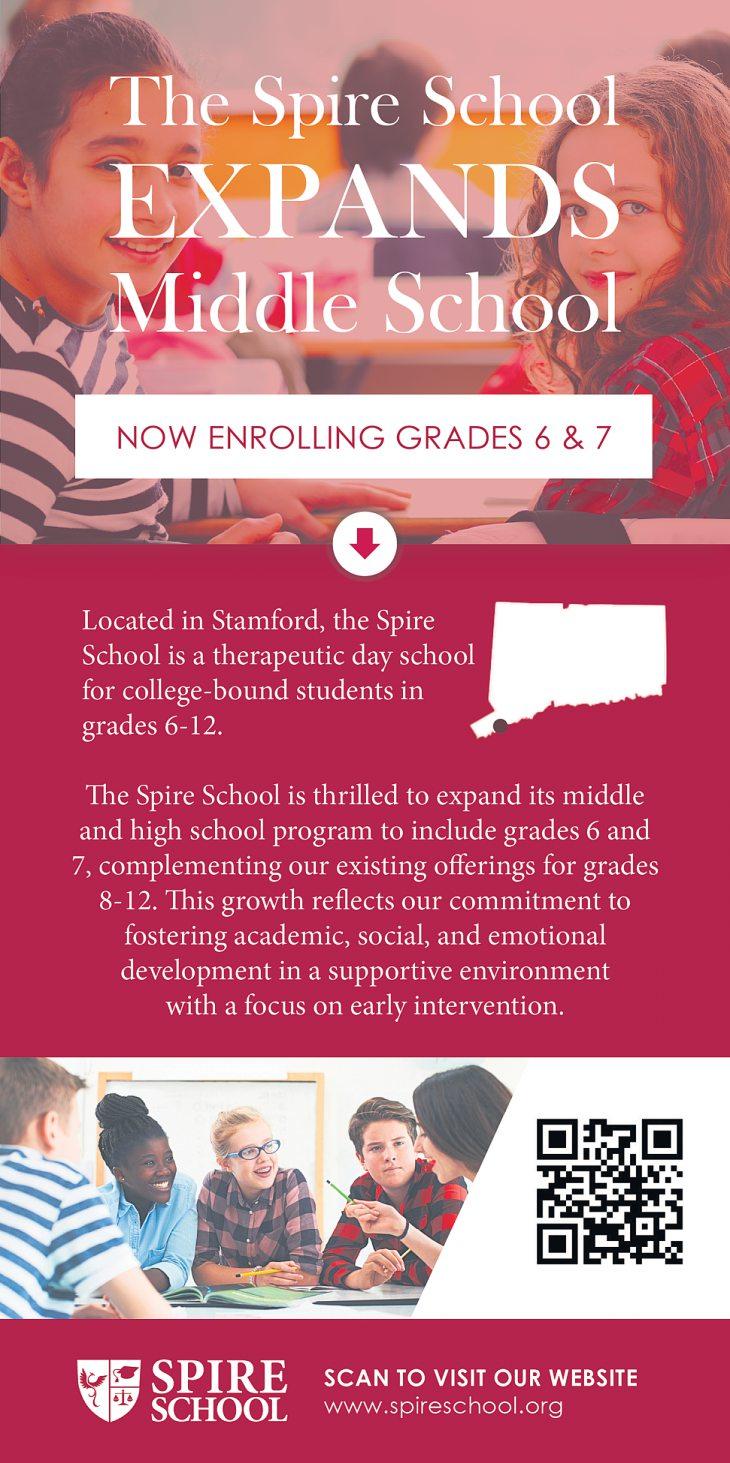


Acoed college-prep boarding and day school for students, grades 5-12, with dyslexia and similar language-based learning disabilities. Gow provides notjust another opportunity to try again, but areal opportunity to succeed. Visit gow.orgto find outmore!


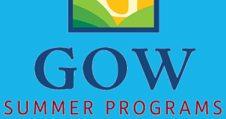
The Gow School Summer Program is for students who have been experiencing academic difficulties, or have been diagnosed with dyslexia or specificlearning disabilities. Five weeks of learning and fun for ages 8-16. June 29 -August 2, 2025 Call 716.687.2001 or visit gow.org/summer-programs to learn about the admissionsprocess and schedule your visit!
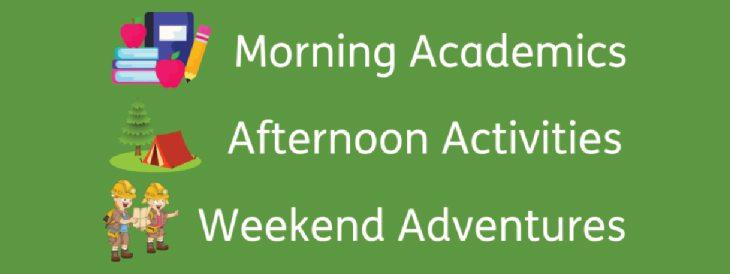

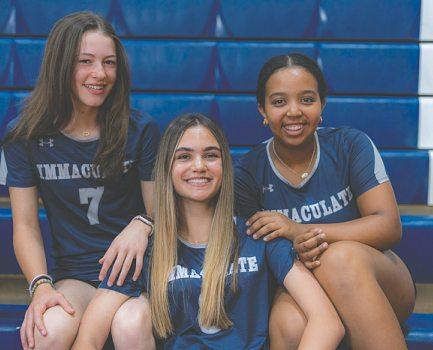
“Comingfroma largepublicmiddleschool,I wasinitially worried aboutthe transition to Immaculate.However, thanks to thekindand welcomingcommunity,I felt comfortableright away ”
-SophiaY.‘27 -Newtown,CT
“Being astudent-athlete at Immaculate offersstudents theopportunitytobuild upon thevaluesofthe school throughathletics.I have learnedthe importance of accountability,teamworkand leadership”
-Jack M. ‘26- NorthSalem,NY
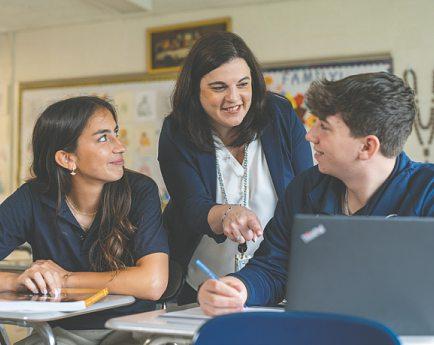

“AtImmaculate,teacherstakethe time to trulyknoweach studentand providethe personalized attentionneeded forthemtoblossomand reachtheir full potential. We do whatever we cantosupport them.”
-Suzanne Curra, Theology Teacher
“Our children were beyond prepared for success in college, andeachtook with them aboatloadofcollege creditsfrom theirdualenrollmentand AP classes. Thecommunity is fantastic, theteachers trulycareabout theirstudentsand the environmentissmall enough that thereis aplace whereeveryonecan shine.”
-Katherine T, -Bethel, CT
Parent ‘22& ‘24
William ‘24(Purdue -HonorsCollege)
Caroline ‘22(GeorgiaTech)

